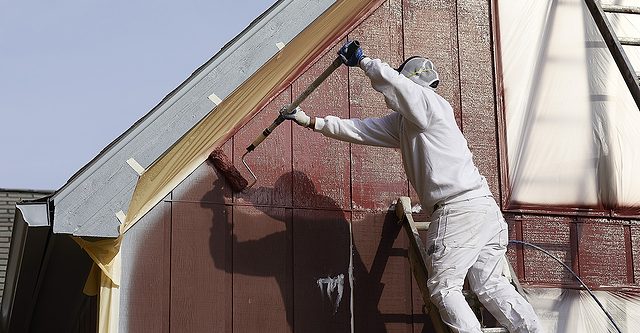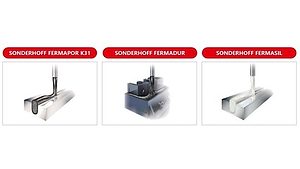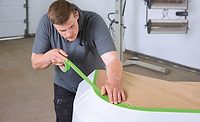Adhesive and Sealant Technologies for Masking Tapes Solve the Painting Industry’s Peskiest Problems
October 16, 2023
Adhesive and Sealant Technologies for Masking Tapes Solve the Painting Industry’s Peskiest Problems
October 16, 2023For nearly a century, painters have been using tape to mask areas where they don’t want paint to go and to create the crisp, clean paint lines that exemplify professional work. Historically, these efforts were met with varying degrees of success and were largely determined by the painter’s skill level, the quality of tools they used, and the types of surfaces they were painting.
For today’s painters, unpredictable outcomes are unacceptable. Regardless of the challenges that come with a project, painting contractors must deliver professional results every time if they want their reputations to shine and their businesses to grow. Tool and supply companies that equip painting contractors for their work must also rise to the challenge and support the industry with innovative products that help them solve their everyday challenges.
For manufacturers of painter’s tapes, developing more targeted adhesives and sealants that create clean lines while solving issues associated with masking rough or difficult-to-stick-to surfaces has been the focus of recent product innovations. With options like exterior painter’s tape that works on self-cleaning paint and sealant technology that works with paint chemistry to prevent paint bleed, painters now have more specialized tape options to produce professional results under virtually any condition.

Engineering a High-Adhesion Masking Tape That Sticks to Self-Cleaning Paint
Less than five years ago, major paint brands began introducing self-cleaning technology that promised to repel dirt and minimize maintenance. Using a special formula that is both hydrophobic and oleophobic, self-cleaning paint easily sloughs off many of the outdoor substances that can cause a paint’s color and performance to degrade over time. This was a win for the paint industry, and self-cleaning paint became a new option for exterior projects.
But while self-cleaning paints have solved one problem for property owners, they have inadvertently created another one for painters: How do you get masking tape to adhere to a material that was meant to repel substances that want to stick to it? The answer lies in product innovations recently developed by masking tape manufacturers, including new adhesive and sealant formulas that solve the self-cleaning paint problem and many other masking challenges for painters.
For instance, painting contractors may start an exterior project by painting the trim around windows and doors — places where clients often opt for self-cleaning paint. What contractors soon realized is that when they returned to these areas to mask off the trim and paint the main areas of the exterior, their masking tapes would not stick to the trim they had previously coated with self-cleaning paint. When using masking tape with paper or poly to cover the already painted trim areas, contractors experienced their tape being rejected by the paint and their masking materials falling down. The same issue was occurring for painters who were performing new paint jobs on exterior surfaces that were previously done with self-cleaning paint.
After hearing an increasing number of these accounts from painting contractors, tape engineers set to work to solve this new problem, and they began developing adhesive formulas that would stick to self-cleaning paints without damaging the finish when the tape was removed.
FrogTape® High Bond Exterior Painter’s Tape® is one example of this type of solution. It uses a rubber-based adhesive with very high adhesion engineered to stick to self-cleaning paints. The product also features a conformable crepe paper backing that allows it to unwind smoothly, fit snugly around trim and fixtures, and tear easily from the roll. When the job is complete, painters can remove the tape cleanly and without leaving residue behind, even when removed up to three days after application.
Looking for a reprint of this article?
From high-res PDFs to custom plaques, order your copy today!
High-Bond Adhesive Also Works on Rough Surfaces
An added benefit of the high-bond adhesive formula in painting tape is that it also performs exceptionally well on rough exterior surfaces that can be tough to tape, such as brick, concrete, painted wood, textured vinyl, and aluminum. The formula’s versatility on exterior surfaces, including those painted with self-cleaning paint, make this type of exterior tape product particularly attractive to painters who want to gain worksite efficiencies by using fewer tools that offer multiple uses. By delivering quick adhesion and a strong bond, this kind of tape can easily move around an exterior job, providing protection for trim areas while also having a strong enough bond to secure masking materials to a brick surface without fear of the material falling down.

Masking Tape Adhesive That’s Functional and Versatile
Overall, new developments in exterior painting tape provide a multitude of benefits for painting contractors that support their ability to efficiently and effectively produce professional results. These benefits include:
- Instant tack so painters can get to work right away. The rubber-based adhesive sticks immediately to exterior surfaces and provides a firm hold even on rough masonry materials like brick and concrete, so painting can begin immediately after masking is finished.
- Clean removal for up to three days. Exterior painter’s tape needs to remain in place long enough for painters to apply multiple coats of paint, which can take several days when factoring in dry time and weather conditions. New adhesive technologies provide clean removal for up to three days after application without the tape leaving residue behind.
- Conformability for effective masking. Exterior projects often require masking around features such as doorways and windows. The conformability of a crepe paper backing makes it easy for painters to shape the tape around these features without leaving gaps.
- Sticks to self-cleaning paint and rough surfaces. Newly engineered adhesives solve the challenges of masking areas with self-cleaning paint and taping rough, irregular surfaces. This allows contractors to offer a wider variety of exterior options without the worry of how they will protect those areas.
Masking tape adhesives have come a long way in improving the results painters can achieve on exterior work, and innovative engineering hasn’t stopped there. Interior painters are also enjoying advances in tape technology in the form of sealants that are putting an end to blurry paint lines.

How Innovative Sealant Technology Stops the Bleeding
In the world of painting, nothing says professional more than crisp, clean paint lines, especially around high-visibility areas. And nothing irks a professional painter more than investing time and materials in taping off interior trim and ceilings only to discover their masking tape wasn’t up to the task. Undoubtedly, paint bleed caused by inferior masking tapes is the bane of many painters, particularly those who work on interiors where clients spend more time scrutinizing their work.
As with the challenge of the self-cleaning paint, innovations in science, engineering, and product manufacturing have come to the rescue in solving this painting problem, too. The solution is in the form of a sealant that prevents paint from bleeding underneath the masking tape. Tapes that are treated with this paint-sealing technology are fast becoming the go-to for painters who want to produce high-end, professional results.
Previous generations of masking tapes relied more on the painter’s skill level to achieve quality results. Experienced painters understand how to apply traditional masking tapes, and most have learned a few tricks of their own to get clean lines, such as pressing firmly along the edges and removing the tape at the right time. Novice painters don’t have these advantages, and sometimes, even the pros struggle to get the paint straight.
To help ensure reliable results for every painter, regardless of experience level, some tape manufacturers developed special technologies to prevent paint bleed. FrogTape brand painter’s tapes with PaintBlock® Technology, for example, uses a sealant with a super-absorbent polymer that reacts with the water in latex paint and instantly gels to form a barrier at the micro level. The barrier then seals the edges of the tape and prevents paint from seeping in underneath. Once the job is finished, painters simply remove the tape as they would any other masking tape, and the result is clean, sharp, professional-looking lines.
Paint bleed protection technology has also proved incredibly versatile, and it can be found on masking tapes for a variety of interior and exterior surfaces with varying clean removal times, including:
- Multi-surface tapes for interior or exterior masking on cured painted walls, wood trim, glass, and metal with up to 21-day clean removal
- Delicate surface tapes for interior use on fresh paint (at least 24 hours after painting), faux finishes, primed wallboard, and coated wallpaper with up to 60-day clean removal
Just as paints have become more specialized, so have the corresponding tools of the painting trade, and choosing the right tool for the job makes all the difference.

New Tape Technologies Are Timely in Tight Labor Market
Whether talking about the benefits of high-bond adhesives or paint-sealing technology in masking tapes, both provide a shared advantage to an industry that is feeling the squeeze of the tight labor market — more efficient use of novice painters.
These new technologies allow painters of all experience levels to feel confident that their masking tape won’t let them down. With new adhesive and sealant formulas, the tapes themselves are bringing expertise to the task. Understanding the purpose of masking is often all that’s required. The tape can do the rest.
Learn more at shurtape.com.
Opening image and article images courtesy of Shurtape.




.jpg?height=300&t=1710891121&width=300)


